Industry-Sponsored Student Capstone Projects
2024/2025
In the 2024/25 academic year the industry capstone program was supported by 65 sponsors, more than half of which were returning, and 96 real-world projects. Over five hundred fifty students from across the College of Engineering participated. Scroll down to learn more about each project.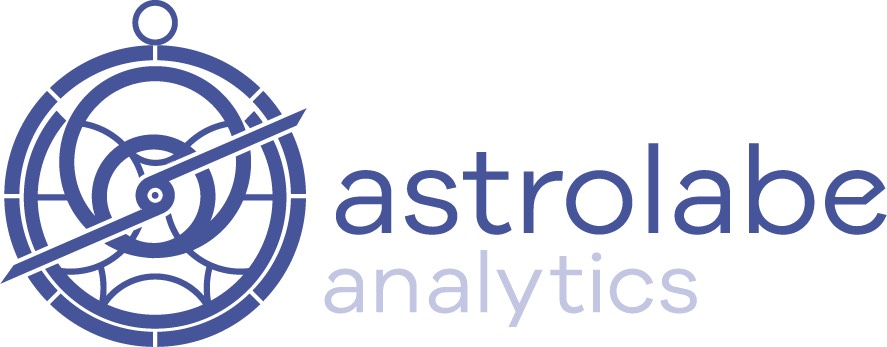
Astrolabe Analytics
Organization and Analysis of Battery Data from Heterogenous Sources
In the rapidly evolving field of energy storage, battery technology plays a crucial role in enabling sustainable solutions. Companies working with batteries often collect vast amounts of data from various sources, such as cell-level and pack-level measurements, cycling tests, and open-circuit voltage experiments. However, this data is typically heterogeneous, originating from different equipment, formats, and naming conventions. The lack of standardization poses significant challenges: • Data Inconsistency: Varying column names, units, and formats make it difficult to aggregate and compare datasets. • Inefficient Data Processing: Data scientists spend considerable time manually cleaning and transforming data before analysis. • Delayed Insights: Slower data processing leads to delays in deriving actionable insights, hindering timely decision-making. These challenges underscore the need for a streamlined process to collect, standardize, and store battery data efficiently. An effective solution would enhance data usability, reduce manual effort, and accelerate the analysis pipeline. This student team will work to develop a web-based portal designed to facilitate the seamless upload and standardization of battery data from diverse sources. The project will encompass both front-end user interface design and back-end data processing, culminating in a functional prototype. The key components of the solution this student team will work to achieve are: 1) User-Friendly Web Portal Potential Flow: Astrolabe Analytics provides access by sending customers a link to access the platform and provide their credentials or basic information such as name, company, and associated project. Once logged in, users can proceed to the data type selection, where they choose the kind of data they wish to upload from predefined categories like discharge data, cycling data, or open circuit voltage data, or specify ‘Other’ for additional types. The portal features an intuitive upload process, supporting drag-and-drop functionality that allows users to efficiently upload multiple files at once. After the upload, the data is tagged with relevant metadata to ensure proper metadata association, linking each dataset to the correct customer and project within the database. 2) Backend Data Management The backend should have the following features: i) Data Standardization Pipeline (can be done in collaboration with Astrolabe Analytics' Lead Data Scientist) a. Automated Transformation: Implement scripts to standardize column names, units, and data formats based on predefined conventions (e.g., using snake_case for column headers like voltage_v, current_a). b. Column Mapping Interface: For datasets with unconventional formats, provide an interface for users to map their columns to standard names during the upload process. c. Error Handling: Detect and flag inconsistencies or missing data for manual review. ii) Data Cataloguing: Standardized datasets are organized and stored, ready for immediate use by data scientists. iii) Cloud Integration - Uploaded files are securely stored on Amazon Web Services (AWS), ensuring scalability and reliability (can be done in collaboration with our Cloud Architect) The outcomes of the design phase that this student team will work to achieve are: • Develop the architecture for both front-end and back-end components. • Create a database schema to store metadata and standardized data. The outcomes of the implementation phase that this student team will work to achieve are: • Build the web portal with user authentication and data upload capabilities. • Develop the data standardization scripts and column mapping interface. • Integrate AWS for file storage and management (interfacing with our Cloud Architect for AWS deployment). The outcomes of the testing and results phase that this student team will work to achieve are: • Validate the system with sample datasets representing various data types. • Demonstrate the reduction in data processing time and improved data consistency. Finally, this student team will work to provide user manuals and technical documentation for future maintenance and scalability.
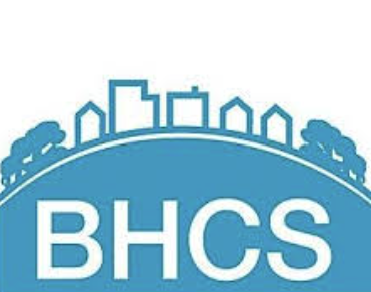
Beacon Hill Community Council
Community Capstones in Clean Energy: Cooling Center Assessment for Beacon Hill
COMMUNITY DESCRIPTION: Beacon Hill is a diverse urban community in Seattle where 70% of the residents identify as black, indigenous, multi-racial, or persons of color; 10% identify as Hispanic/Latinx. A majority of the community speaks a language other than English. Major ground and air transportation corridors border the neighborhood, resulting in disproportionate burden from fossil emissions and noise. Beacon Hill also has low tree canopy cover, making the neighborhood an urban heat island especially vulnerable to increasingly frequent extreme heat events being experienced in the pacific northwest. –––––––––––––––––––––––––––––––––––––––––––––––––––––––––––––––––––––––––––––– PROJECT DESCRIPTION: The Beacon Hill Council has identified several possible locations for community cooling centers that are accessible to their most vulnerable populations during extreme heat events, and days with unsafe air quality. One or more of these sites, based on community input and preliminary technoeconomic analysis, will be evaluated for current energy use patterns and the site’s technical and economic potential for on-site solar energy and energy system upgrades to deliver needed cooling and air-filtering at an affordable electricity cost. The addition of energy storage will be used to assess the added cost to provide resiliency to outages. Project timeline and deliverables will include, at a minimum: • January, 2025: Working with Beacon Hill Council leadership, establish criteria for a community cooling and air quality center, identify several possible sites for preliminary analysis of their technical and economic potential. • February, 2025: Site(s) selection and acquisition of meter data. • March, 2025: Mutually-agreed upon statement of work and baseline data set for analysis. • Spring Quarter, 2025: Carry out statement of work activities tied to understanding annual energy needs and the impact of system upgrades to achieve needed cooling and air quality during extreme weather and smoke events. Energy system analysis may include the technical and economic implications of adding solar energy to reduce the burden of energy costs during extreme weather, adding energy storage to enable ride-through during power outages (which are more likely in extreme weather and forest fire season), and HVAC system upgrades. • May/June, 2025: Final technical report and presentation.
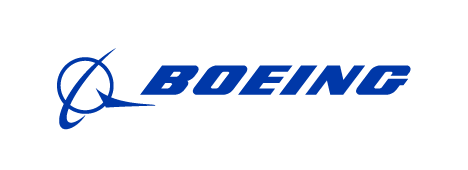
Boeing
Life Cycle Assessment of Electrocoating Process
Electrocoating (E-coat) is a paint application process that uses electrical current to deposit charged paint particles onto a conductive substrate. This technique has numerous sustainability benefits such as minimizing paint waste through continuous reuse of the resin, eliminating single use maskants by minimizing paint overspray, and achieving a uniform coating thickness across complex parts. Recent advances in this technology make it an appealing candidate for use in aerospace, however the full impact of the application is unknown. Life Cycle Assessment (LCA) is a methodology for assessing environmental impacts of a product that accounts for all stages of the product life cycle. The goal for this student team is to complete a full LCA of E-coat processes and make recommendations for future design considerations. The student team will develop Life Cycle Assessment of E-coat materials and processes. Include an analysis of upstream considerations (e.g. resin composition, equipment design), manufacturing operations (e.g. operating parameters, resin recycle efficiency, waste disposal), end product performance and use (e.g. coating thickness uniformity, part design constraints, durability), and end of life (e.g. disposal, recycling). The final deliverables for this student team will be a literature review of E-coat processes and design considerations. A report documenting the input parameters and outcomes from a Life Cycle Assessment. Recommendations for the future work based upon the conclusions drawn.
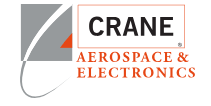
Crane Aerospace & Electronics
Sn62 Solder Water-Soluble Flux Paste System
Many legacy solder pastes include rosin-based fluxes in their chemistries. Rosin-based fluxes, while cleanable, are harder to clean and require special solvents. This student team will work to explore new flux systems that have water-soluble fluxes or water-cleanable flux chemistries for the future. This student team will work to learn about different flux chemistries for Sn62 pastes and how they affect solderability and perform material testing that could include cleanability, solderability, corrosion, and fractography. This student team will work to perform an industry search for Sn62 solder pastes, create a test plan, and carry out the test plan before suggesting a flux system. The students will be working alongside Crane Aerospace & Electronics (CAE) engineers who will support and supervise the students as needed. The new solder paste must create solder joints that pass IPC standards and be fully cleanable with water. Cleaned units must pass both IPC and MIL-STD inspection requirements. This student team will get to learn and interact with the main solder manufacturers and learn about the different environments CAE products experience. To reflow the solder pastes, students can come to CAE to reflow samples if UW does not have a sufficient reflow oven. Because solder pastes should be water-soluble, preliminary cleanability tests should be doable at the UW Seattle campus using a fume hood and beakers. Corrosion testing is a high temperature, high humidity, extended time test that should be performable at UW Seattle. Solderability and fractography testing of the solder joints should also be performed at UW Seattle. If needed, someone from CAE can support students testing at UW's facilities. If ROSE testing and SIR testing are available, that would be best for further cleanability testing. If there is time, students can come onsite to CAE and test on CAE's ROSE tester. SIR is outplanted at CAE. The outcomes the student team will work to achieve include: 1) Gain familiarity with J-STD-001, -004, -005, -006 and IPC-A-610 if not already familiar 2) Market search for Sn62 pastes that have a water-soluble flux system or is DI-water cleanable 3) Select pastes and obtain samples for testing 4) Create a test plan (consider factors like cleanability, solderability, corrosion, fractography, radiography, etc.) to perform at UW that meets internal and J-STD requirements & Design coupons 5) Develop test set up that can be done at UW 6) Carry out test plan with support of CAE engineers 7) Write up and present suggested materials based on their data

Expedition Medicines
Super-Glue – Interactive Web Tool to Facilitate Chemistry <> ML Collaboration
Machine learning is poised to make an enormous impact in the field of pharmaceutical chemistry. The rapidly increasing scale, throughput and accuracy of biological assays provides the perfect substrate for machine learning algorithms to make sense of the complex biological mechanisms that underpin disease in a way that humans are incapable. However, the intuition built from decades of drug discovery experience by expert medicinal chemists is a vital source of knowledge that is missing from the models built from these assays. Incorporating expert rules into our modeling strategies not only helps improve the performance of our models, but it is also crucial for building trust across domains and integrating ML into current drug discovery pipelines. This student team will work to create an interactive tool that will help facilitate this collaboration by providing a flexible framework for ML and MedChem teams to share knowledge through chemical annotations, computations, and predictions in a scalable and data-driven manner. Students will design an interactive web application that satisfies the following criteria: 1. Users can load and interact with static molecular databases containing structures, predicted properties and other metadata of interest 2. Users can run similarity searches on databases of known drug-like molecules and display the compounds that are most similar to a compound of interest 3. Users can interactively highlight, annotate and modify chemical substructures which can then be exported in a machine-readable format 4. STRETCH: Allow users to submit compounds through computational/ML pipelines served by cloud infrastructure Performance will be measured by successful implementation of all the above features in code. This will encompass all of the key steps in the software development cycle including the creation of design docs, submission of pull requests, code reviews, and CI/CD testing. By the end of the capstone, students will deliver a code repository containing all of the back-end and front-end infrastructure required for hosting the interactive tool on a web-based server. Students will also be asked to perform a live demo of the tool for the medicinal chemistry team at FL94.

Membrion
Estimation of TDS Factors for Salt Solutions From Conductivity Versus Concentration Datasets
In engineering design, it is important to understand the constituents and chemistry of wastewater streams. The streams treated by Membrion's ECD technology are often complicated and lack qualitative and quantitative information. Conductivity is an easy measure of ionic composition but does not provide enough information about total dissolved solids. The student team will work to build a tool to predict total dissolved solids (TDS) factors for a range of individual and mixed salt solutions with varying concentrations and conductivities. The student team will: -Research composition of typical acidic wastewater streams in Membrion's target market. -Perform a literature survey to identify example stream compositions in semiconductor manufacturing, metal plating and finishing, and acid mine drainage industries. -Prepare an experimental matrix of different salts containing relevant ions having a range of concentrations. -Build a dataset of concentrations and their corresponding conductivities. -Build an empirical model to predict possible individual ion concentrations given the conductivity and species present in a wastewater stream. Optionally, use AI to further enhance model. The student team will work to create a tool/model/software that can predict TDS values from conductivity over a range of salt concentrations.

Membrion
Greenhouse Gas Emissions Calculator for Conventional Wastewater Treatment
Traditional treatment methods for metal-containing wastewater typically involve a mix of off-site trucking, chemical precipitation, incineration, and/or encapsulation. While there exist open-source greenhouse gas (GHG) calculators for treating municipal waste, these tools do not exist for metal-laden industrial waste streams. The goal for this student team is to develop a tool that can estimate the GHG emissions associated with conventional treatment methods based on flow rate, and high-level water quality data (i.e., pH, total dissolved solids, metal-ion concentrations). By comparing to GHG emissions of Membrion's wastewater treatment process, we can calculate the total GHG abated by customers who employ these new wastewater strategies. As companies and investors increase their focus on environmental, sustainability, and governance (ESG) goals, this numbers gives them quantitative motivation to fund and adopt new technologies. -Students will first perform a literature review of common treatment methods for 3 industries producing metal-laden wastewater: semiconductor, metal plating/finishing, and mining (specifically acid mine drainage). -Students will identify important input parameters necessary to calculate GHG emissions and determine which can be user inputs vs documented assumptions. -Students will leverage open-source data and document assumptions to calculate GHG emissions associated with each process. The student team will work to complete a literature review of common treatment methods for metal-containing wastewater from 3 main industries: semiconductor manufacturing, metal plating/finishing, and mining (specifically acid mine drainage). The desired outcome for the student team is an Excel workbook with sections that calculate these processes. Currently, Membrion has identified these sections: 1) Wastewater input parameters - allows users to input variables such as flow rate, and water quality data (i.e., pH, total dissolved solids, metal-ion concentrations) 2) Treatment parameters - allows users to select which treatment processes are utilized. 3) GHG from chemical precipitation - uses input parameters to calculate GHG emissions associated with production of chemicals such as lime for precipitation 4) Trucking - estimates GHG emissions associated with trucking wastewater and based on volume trucked and average distance to off-site treatment. 5) Incineration - GHG emissions associated with incinerating sludge to create a solid 6) Encapsulation - Determine GHG associated with encapsulating metal-containing sludge to prevent leaching back into the environment.
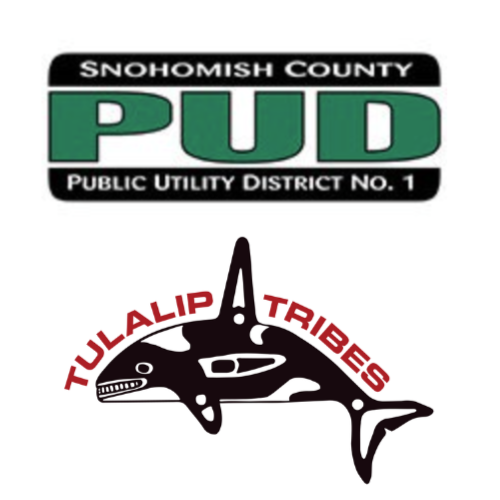
Tulalip Tribes and Snohomish Public Utility District
Resiliency for the Tulalip Tribes Government Center – Community Considerations
COMMUNITY DESCRIPTION: The Tulalip (pronounced Tuh’-lay-lup) Tribes are direct descendants of and the successors in interest to the Snohomish, Snoqualmie, Skykomish, and other allied bands signatory to the 1855 Treaty of Point Elliott. The treaty reserved the Tulalip Indian Reservation as a permanent homeland over which the Tulalip Tribes have retained inherent sovereign jurisdiction. The Tulalip Reservation exterior boundaries enclose a land-base of 22,000 acres rich with natural resources: marine waters, tidelands, freshwater creeks and lakes, wetlands, forests and developable land. The Tribe’s status as a sovereign entity maintains their right to self-govern as a “nation within a nation” and includes the inherent right as a government to raise revenue for the community. The reservation is governed by a board of seven directors chosen by Tribal members for three-year terms of service - a modern version of the separate Tribal Councils that governed the Tribes and allied bands for thousands of years in the Puget Sound. PROJECT DESCRIPTION: The partnership between the Tulalip Tribes and Snohomish County PUD allows two perspectives on how adding clean energy generation and storage across the Tribal Campus can support: (a) Tribal Goals for resiliency, cost savings, and carbon reduction, while also (b) enhancing SnoPUD’s capability to meet its growing electrical loads, while operating a stable and secure system. This project takes a community perspective on the plans to add significant new clean energy infrastructure, assessing the reduction in energy costs to the community, added resiliency to outages, and the lowering of carbon emissions. Ultimately the technical and economic analysis will support community discussions of options and grant getting. The timeline and deliverables are expected to include the following: • December/January: Review any prior reports on individual building performance, preliminary design or data analysis for distributed energy resources on the main Tribal Campus, meter and billing data. Assign building load synthesis projects across both Tulalip/SnoPUD groups. • Winter Quarter, 2025: Students will create simulated 1-hour load profiles that represent major Tribal Campus buildings based on actual billing data, national building performance data, assessment of building use cases, and other information gleaned from a site visit. Winter Deliverables: Simulated 1 hour data for a “Business as Usual” (BAU) year, and Statement of Work (SOW) for Spring. • Spring Quarter, 2025: Design and analysis addressing tasks in SOW will identify buildings with greatest potential for reducing BAU bills and meet community resiliency goals during extended outages through distributed clean energy resources. Critical loads during outages will be estimated and prioritized based on community input and goals, and resilience introduced by solar + storage and other back-up generation will be assessed for high priority buildings. Final Reports and a Showcase presentation will be completed in late May or early June. • Optional K-12 Classroom and/or Adult Education Programs. Separate from this project, the Clean Energy Institute has an active grades 4th-12th “Ambassador” program that introduces clean energy ideas to young people as a way to advance community conversations and support next-generation science in schools. We also recently established a new adult-oriented clean energy education program that was piloted at a senior center. If of interest to the community, we would be happy to discuss Clean Energy community education programs with you.

Tulalip Tribes and Snohomish Public Utility District
Resiliency for the Tulalip Tribes Government Center – Utility Considerations
COMMUNITY DESCRIPTION: The Tulalip (pronounced Tuh’-lay-lup) Tribes are direct descendants of and the successors in interest to the Snohomish, Snoqualmie, Skykomish, and other allied bands signatory to the 1855 Treaty of Point Elliott. The treaty reserved the Tulalip Indian Reservation as a permanent homeland over which the Tulalip Tribes have retained inherent sovereign jurisdiction. The Tulalip Reservation exterior boundaries enclose a land-base of 22,000 acres rich with natural resources: marine waters, tidelands, freshwater creeks and lakes, wetlands, forests and developable land. The Tribe’s status as a sovereign entity maintains their right to self-govern as a “nation within a nation” and includes the inherent right as a government to raise revenue for the community. The reservation is governed by a board of seven directors chosen by Tribal members for three-year terms of service - a modern version of the separate Tribal Councils that governed the Tribes and allied bands for thousands of years in the Puget Sound. PROJECT DESCRIPTION: The partnership between the Tulalip Tribes and Snohomish County PUD allows two perspectives on how adding clean energy generation and storage across the Tribal Campus can support: (a) Tribal Goals for resiliency, cost savings, and carbon reduction, while also (b) providing new dispatchable utility capacity that helps SnoPUD meet its growing electrical loads, while operating a stable and secure system. This project takes a utility perspective on the Tulalip plans to add significant new clean energy infrastructure and assesses some of its benefits and consequences to the utility operations. The timeline and deliverables are expected to include the following: • December/January: Review any reports on prior preliminary design or data analysis, organize the PUD substation, meter and billing data. Assign building load synthesis projects across both Tulalip/SnoPUD groups. • Winter Quarter, 2025: Students will create simulated 1-hour load profiles that represent major Tribal Campus buildings based on billing data, national building performance data, assessment of building use cases, and other information gleaned from a site visit. Winter Deliverables: Simulated 1 hour data for a “Business as Usual” (BAU) year, and Statement of Work (SOW) for Spring. • Spring Quarter, 2025: Design and analysis addressing tasks in SOW will include power flow analysis in the BAU Case and various clean energy installation scenarios. The utility-oriented economic analysis will estimate utility costs and savings associated with using tribal resources vs. BPA and other peak power providers, as well as potential savings from deferred infrastructure investments. Final Reports and a Showcase presentation will be completed in late May or early June. • Optional K-12 Classroom and/or Adult Education Programs. Separate from this project, the Clean Energy Institute has an active grades 4th-12th “Ambassador” program that introduces clean energy ideas to young people as a way to advance community conversations and support next-generation science in schools. We also recently established a new adult-oriented clean energy education program that was piloted at a senior center. If of interest to the community, we would be happy to discuss Clean Energy community education programs with you.
Related News
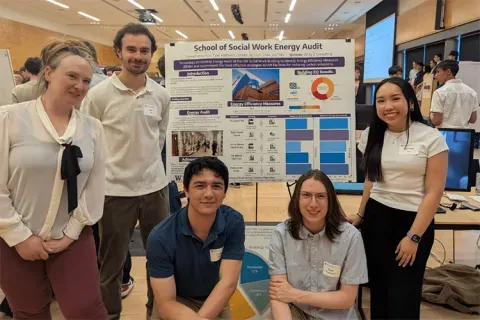
Mon, 10/13/2025 | UW Mechanical Engineering
Capstone collaboration leads to award
An ME capstone team received first place for its energy audit of the UW School of Social Work building.
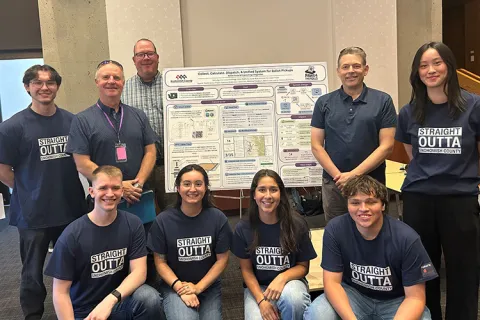
Thu, 07/17/2025
UW engineering students develop smart ballot solution
UW engineering students develop smart technology solution to improve ballot collection for Snohomish County.
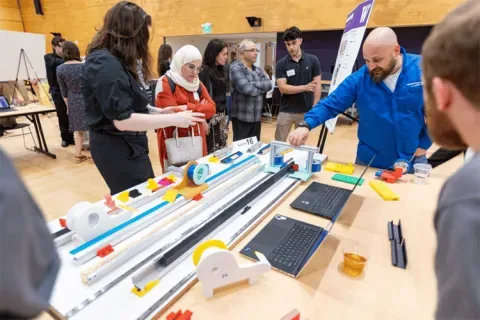
Mon, 07/07/2025 | UW Mechanical Engineering
Capstone creations
Students displayed innovative capstone design projects at the 2025 expo.
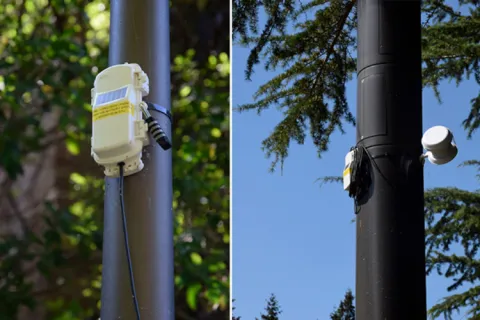
Fri, 09/20/2024 | UW Civil & Environmental Engineering
Smarter irrigation for a greener UW
A new project combines satellite data with ground sensors to conserve water and create a more sustainable campus environment.